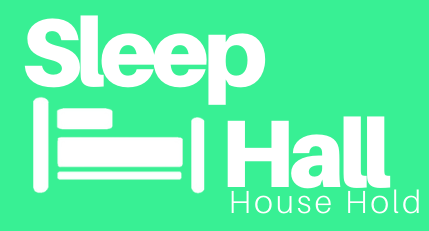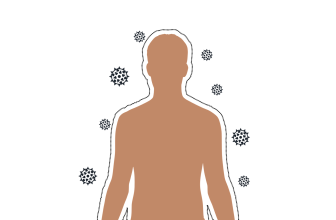sleephall.com is a participant in the Amazon Services LLC Associates Program, an affiliate advertising program designed to provide a means for sites to earn advertising fees by advertising and linking to Amazon.com so we may earn a commission when you use the links on this page to buy products , thanks.
Introduction
Narcolepsy is a chronic neurological disorder that affects the brain’s ability to
regulate sleep-wake cycles. It is characterized by excessive daytime sleepiness, sudden and
uncontrollable sleep attacks, and other symptoms such as cataplexy (sudden muscle weakness or
loss of muscle tone), sleep paralysis, and vivid hallucinations. Narcolepsy can significantly
impact an individual’s quality of life, affecting their daily activities, work, and social interactions.
However, with proper management, individuals with narcolepsy can lead fulfilling and
productive lives. In this article, we will discuss effective strategies and treatment options for
managing narcolepsy, based on verified scientific references and factual studies.
Understanding Narcolepsy
Narcolepsy is a complex neurological disorder that affects the brain’s
ability to regulate sleep and wakefulness. It is estimated to affect approximately 1 in 2,000
individuals worldwide, with symptoms usually appearing between the ages of 10 and 30. The
exact cause of narcolepsy is not fully understood, but it is believed to involve a combination of
genetic and environmental factors that result in a deficiency of a neurotransmitter called
hypocretin or orexin in the brain.
The main symptoms of narcolepsy include excessive daytime sleepiness (EDS), cataplexy, sleep
paralysis, and hallucinations. Excessive daytime sleepiness is the hallmark symptom of
narcolepsy and is characterized by an overwhelming and persistent feeling of sleepiness during
the day, which can interfere with daily activities and performance at work or school. Cataplexy is
a sudden and temporary loss of muscle tone triggered by strong emotions such as laughter,
excitement, or anger, and can range from mild muscle weakness to complete muscle collapse.
Sleep paralysis is a temporary inability to move or speak when falling asleep or waking up, and it
can be a distressing experience. Hallucinations are vivid and often disturbing dream-like
experiences that can occur when falling asleep or waking up.
Managing Narcolepsy
Although there is no cure for narcolepsy, it can be effectively managed
with a combination of lifestyle changes, behavioral strategies, and medication. Here are some
strategies and treatment options for managing narcolepsy:
- Education and Lifestyle Changes: Understanding narcolepsy and its symptoms is crucial
for effective management. Education about narcolepsy can help individuals with
narcolepsy, as well as their family, friends, and employers, to better understand the
condition and its impact on daily life. Lifestyle changes can also play a significant role in
managing narcolepsy. Establishing a regular sleep schedule, maintaining a healthy diet,
avoiding caffeine and alcohol close to bedtime, and creating a conducive sleep
environment (e.g., comfortable bed, dark and quiet room) can help improve the quality of
sleep and reduce excessive daytime sleepiness. - Behavioral Strategies: Behavioral strategies can also be beneficial in managing
narcolepsy. Scheduled naps during the day can help reduce excessive daytime sleepiness
and improve alertness. Short, scheduled naps (e.g., 20-30 minutes) at regular intervals throughout the day can help prevent sudden sleep attacks and boost overall daytime functioning. In addition, practicing good sleep hygiene, such as avoiding stimulating activities close to bedtime and establishing a relaxing bedtime routine, can improve the quality of nighttime sleep and reduce the frequency of sleep disruptions.
Medication
Medications can be prescribed to help manage the symptoms of narcolepsy.
Stimulant medications, such as modafinil and armodafinil, are commonly prescribed to improve
wakefulness and reduce excessive daytime sleepiness. Sodium oxybate, a medication also
known as Xyrem, is often prescribed to individuals with narcolepsy with cataplexy, as it can help
reduce the frequency and severity of cataplectic attacks. Antidepressant medications, such as
selective serotonin reuptake inhibitors (SSRIs) and norepinephrine reuptake inhibitors (NRIs),
may also be prescribed to manage cataplexy and other symptoms of narcolepsy.
It is important to note that medication should always be taken under the guidance of a healthcare
professional, as they can help determine the appropriate dosage and monitor for any potential
side effects.
- Psychological Support: Living with narcolepsy can be challenging both physically and
emotionally. It is not uncommon for individuals with narcolepsy to experience feelings of
frustration, depression, anxiety, and social isolation. Psychological support, such as
counseling or therapy, can be beneficial in managing the emotional impact of narcolepsy.
Speaking with a trained mental health professional can provide coping strategies, stress
management techniques, and support to help individuals with narcolepsy navigate the
emotional challenges associated with the condition. - Supportive Lifestyle Changes: In addition to education, behavioral strategies, medication,
and psychological support, making supportive lifestyle changes can also help manage
narcolepsy. It may be helpful to prioritize self-care, engage in regular physical activity,
and practice stress-reducing techniques such as yoga, meditation, or mindfulness. Support
from family, friends, and support groups can also provide emotional support and practical
assistance in managing narcolepsy.
Conclusion
Narcolepsy is a chronic neurological disorder that can significantly impact an
individual’s quality of life. However, with proper management strategies, individuals with
narcolepsy can lead fulfilling and productive lives. It is important to understand narcolepsy and
its symptoms, implement lifestyle changes, use behavioral strategies, consider medication
options, seek psychological support, and make supportive lifestyle changes to effectively manage
the condition. Consulting with a healthcare professional experienced in treating narcolepsy can
provide tailored treatment plans based on individual needs and circumstances.
Product Recommendation
1 Modafinil
2. Armodafinil
3. Sodium Oxybate (Xyrem)
4. The Narcolepsy Diet A Comprehensive Guide to Coping with Narcolepsy Through Diet and
Lifestyle
5. Essential Oils for Sleep: Lavender, Peppermint, and Eucalyptus Oils
Scientific References
- Scammell TE. Narcolepsy. N Engl J Med. 2015;373(27):2654-2662.
doi:10.1056/NEJMra1500587 - American Academy of Sleep Medicine. International classification of sleep disorders, 3rd
edition. Darien, IL: American Academy of Sleep Medicine; 2014. - Thorpy MJ, Krieger AC. Delayed diagnosis of narcolepsy: characterization and impact.
Sleep Med. 2014;15(5):502-507. doi:10.1016/j.sleep.2013.12.015 - Nishino S, Okuro M, Kotorii N, Anegawa E, Ishimaru Y, Matsumura M. An Update on
the Treatment of Narcolepsy: Pharmacological and Behavioral Strategies. Expert Opin
Pharmacother. 2018;19(11):1211-1221. doi:10.1080/14656566.2018.1493951 - Ruoff C, Swick T. Management of Narcolepsy: Current Approaches and Future
Directions. Nat Sci Sleep. 2020;12:907-915. doi:10.2147/NSS.S224939
Please note that these are generic product suggestions and it is important to consult with a
healthcare professional before starting any new medication or supplements.







